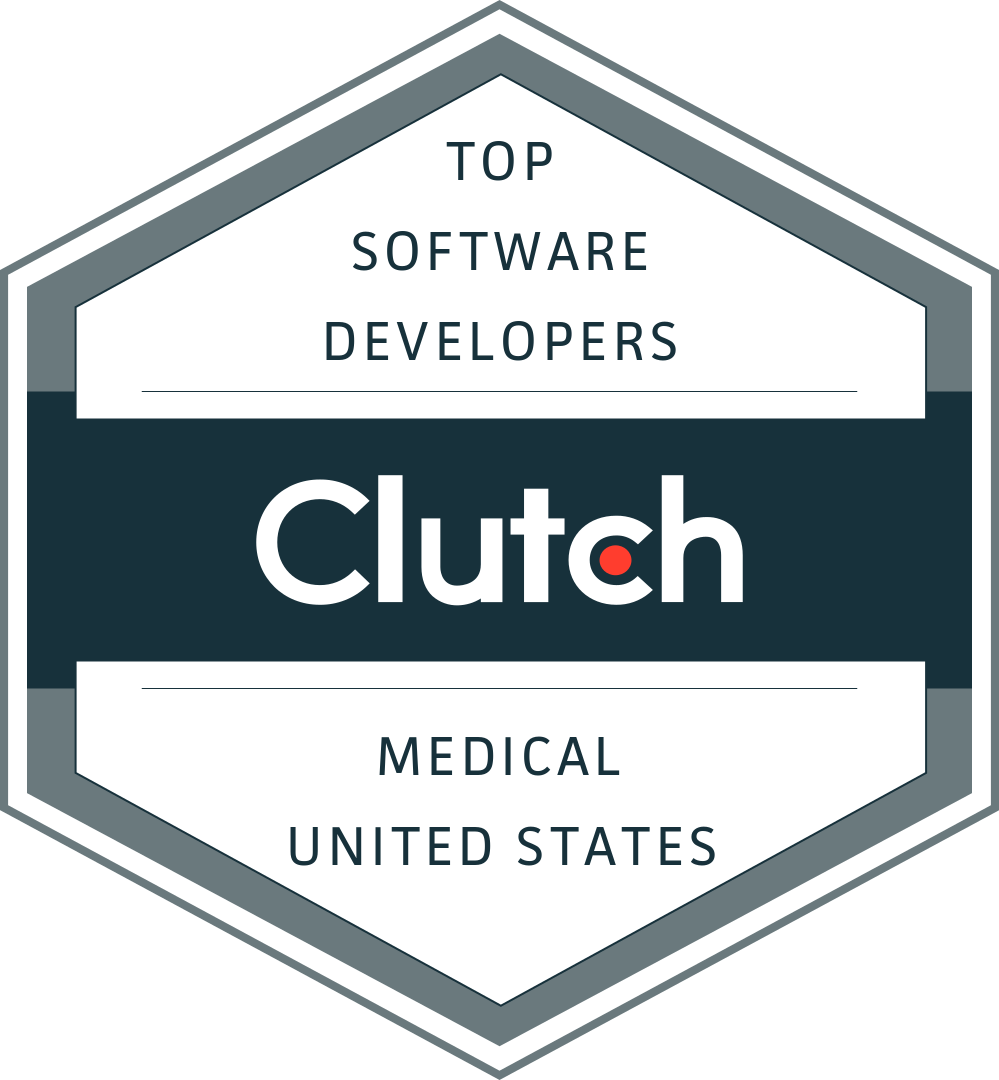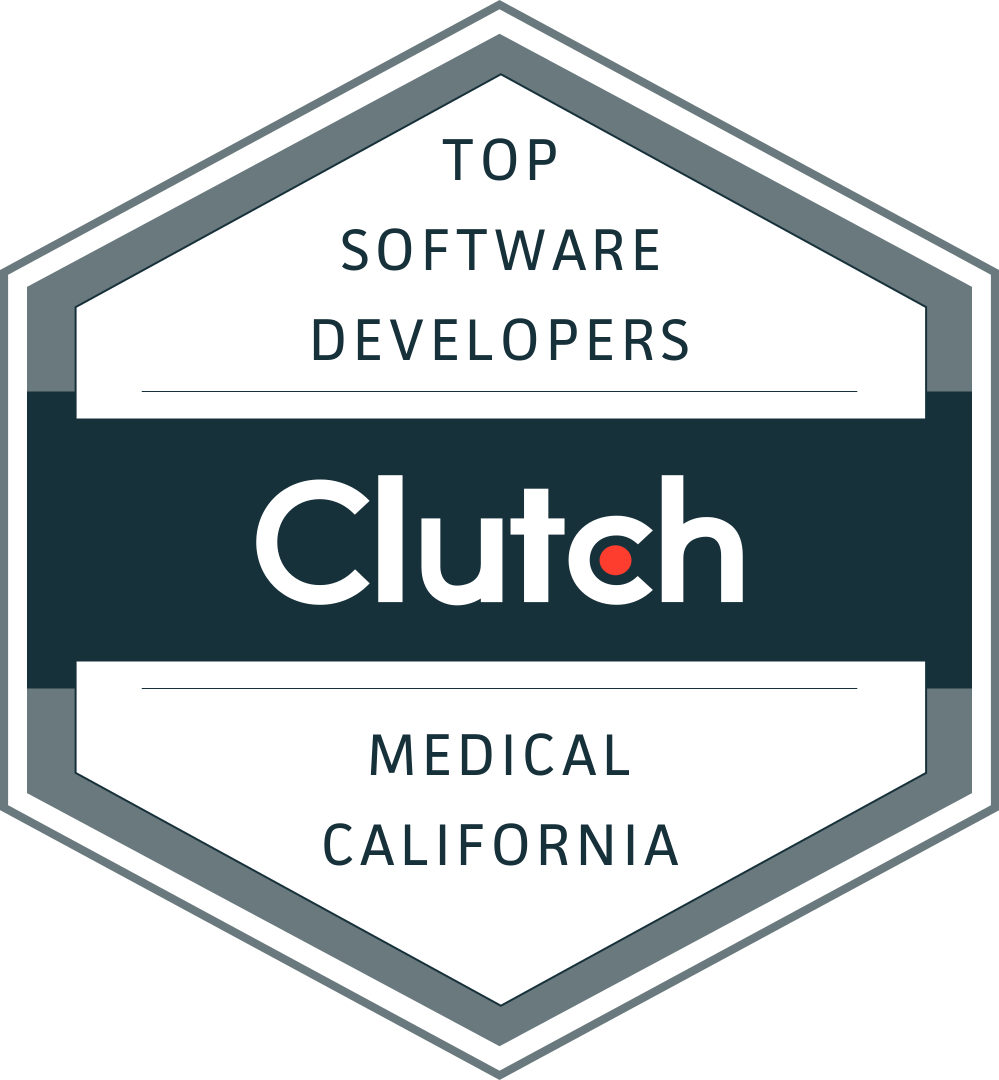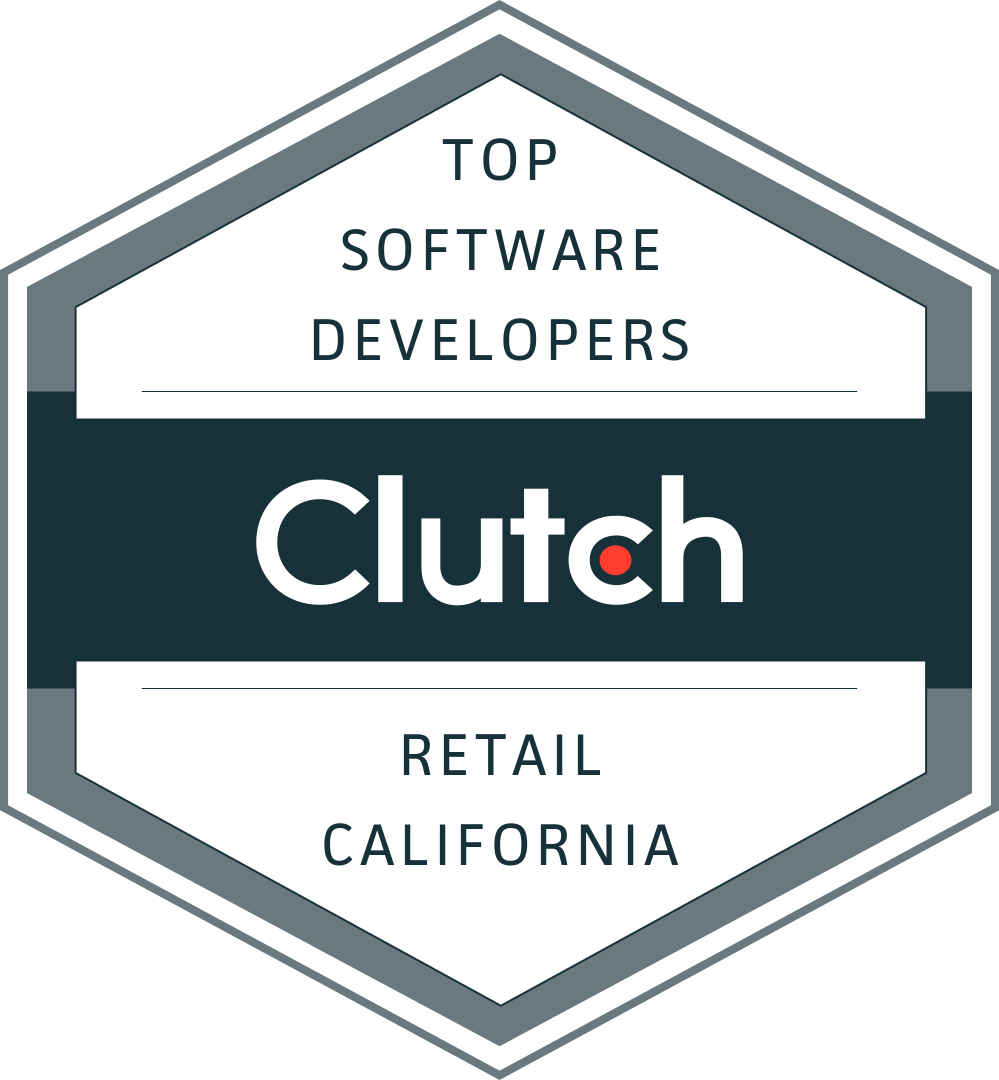Introduction In 2025, nearly every SaaS contract comes stamped with “AI included.” From EHRs to HRIS to billing tools, vendors promise instant efficiency with a single toggle switch. But here’s the catch: leaders across ABA networks, MSOs, and regional health plans are realizing these add-on AI features often come with 30–50% uplifts, vendor lock-in, and […]

Why bundled SaaS AI can silently stall growth—and how healthcare leaders are reclaiming control with model-agnostic orchestration.
Introduction
AI now comes baked into nearly every SaaS software that healthcare organizations rely on—from practice management systems to HRIS platforms to CRM programs. But here’s the catch: you don’t control the AI provider or the model, you can’t swap it out, and have no visibility into what the software provider is doing with your data. That’s not a feature—it’s a liability. In this article, we break down the risks of vendor-locked “black-box” AI and show how leading healthcare orgs are adding flexible, auditable AI on top of their existing systems to reduce churn, cut costs, and reclaim control.
The Black-Box Creep: How SaaS AI Got Out of Control
Every software system now includes some form of embedded AI. But what looks like “innovation” at the surface masks a serious loss of control underneath.
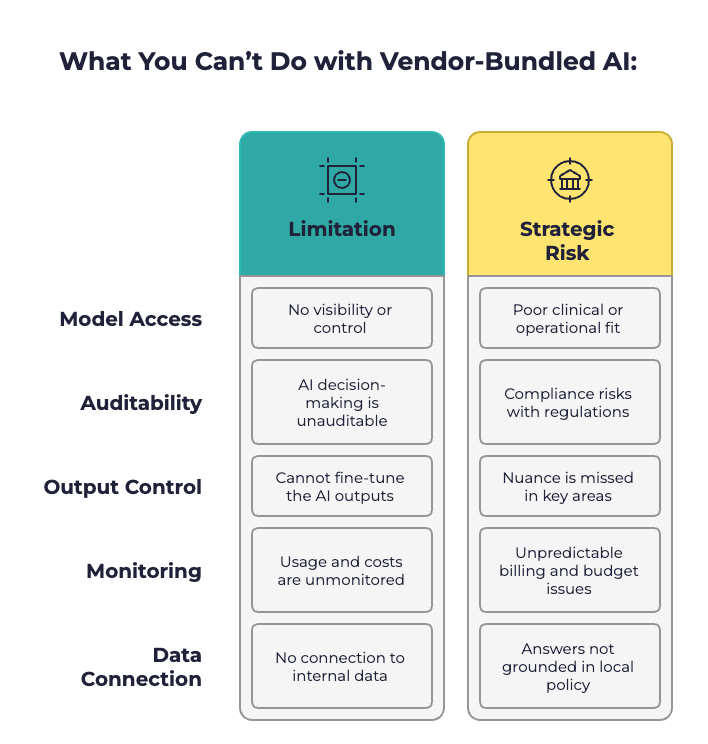
Gartner warned in 2024 that “vendor-bundled AI is becoming a hidden cost center”. They recommend that organizations build control-layer visibility and governance early, before AI decisions scale across workflows.
Real-World Impact: 3 Common Scenarios
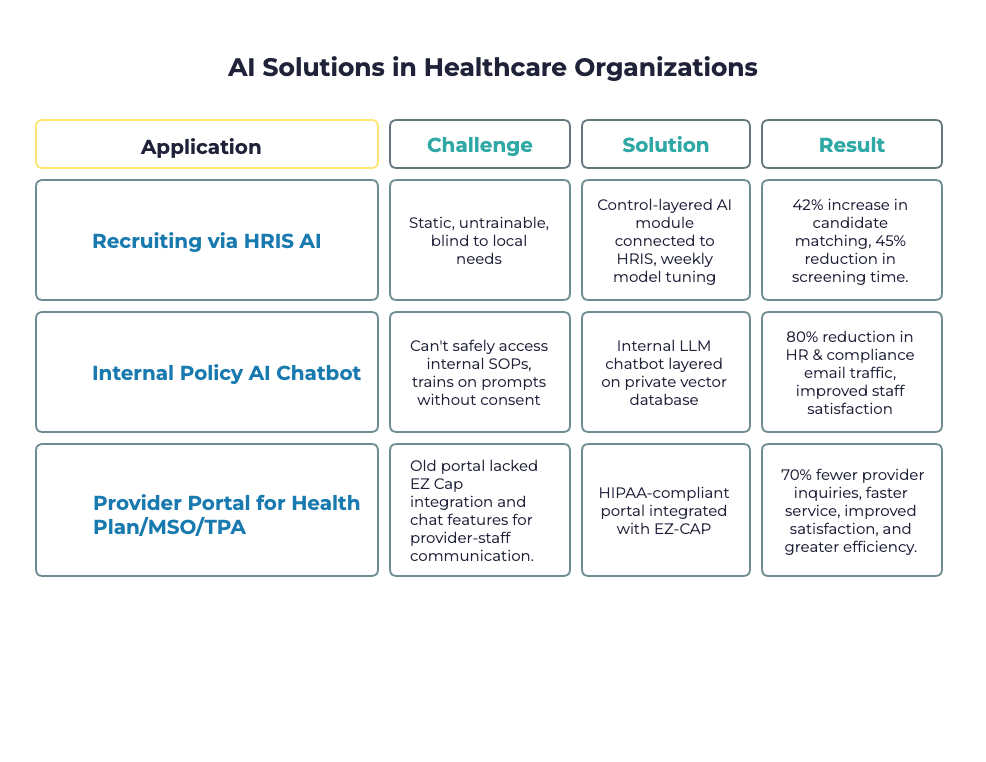
The Root Cause: One-Size-Fits-Nobody AI
Most SaaS platforms license third-party LLMs (OpenAI, Anthropic, etc.) under the hood—but:
- You don’t know what data is being captured or reused
- You can’t switch models as costs drop or accuracy improves
- You may be training your SaaS provider who in turn trains your competitors
Serious Development has been working with our healthcare clients on these very issues. The good news is that there are ways to ensure that your organization is in control of how AI is used throughout your organization.
The Solution: Open AI Orchestration Layer
You don’t need to rip out your current stack. You need to bolt on control.
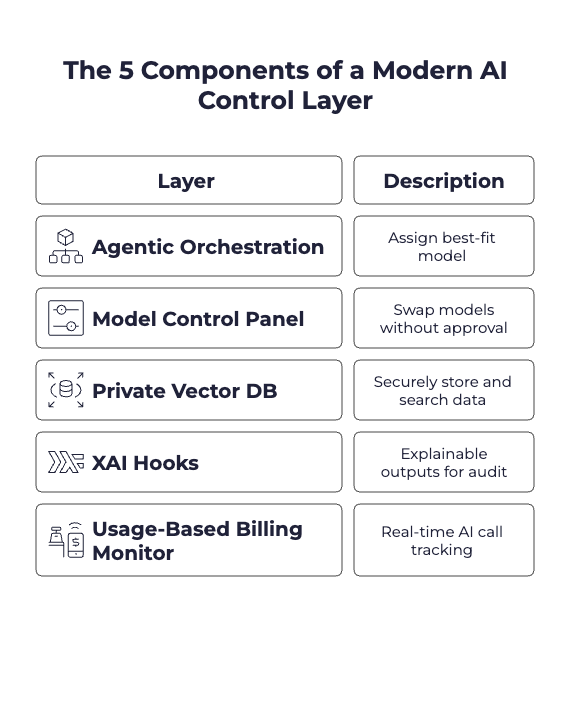
“You wouldn’t let your EHR run without audit logs. Why let your AI?”
—Mark McCary, AI Strategist, Serious Development
Why It Pays Off Fast
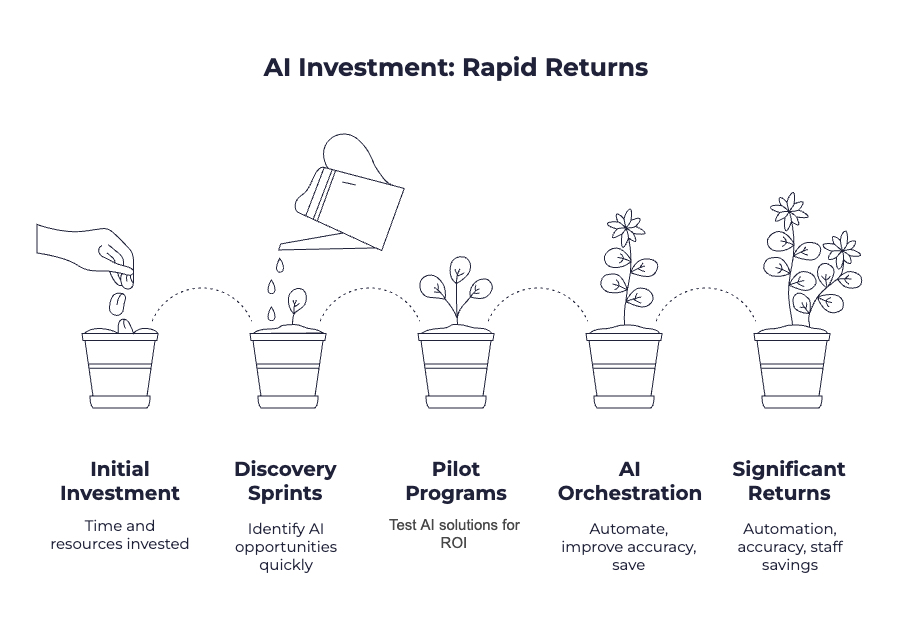
Takeaways for Healthcare Leaders:
- 1. AI performance is now a C-level responsibility. ( If your team can’t explain or govern what the AI is doing, the risk lands on your desk.)
- 2. SaaS AI is not your AI. (If you can’t swap the model, connect your policies, or audit usage—you don’t own it and can't control it.)
- 3. Fix it without a forklift. (You don’t need to change systems. You need to add a control layer.)
- 4. Modular wins the future. (Open architectures align better with compliance, cost control, and evolving use cases.)
Frequently Asked Questions (FAQ)
Can we run AI securely on top of our Practice Management System, HRIS, or our CRM?
Yes. A modular AI control layer connects to your existing stack via APIs or exports—enabling private vector databases, explainable outputs, and model orchestration without migrating systems or compromising PHI.
What’s the difference between a vendor’s AI feature and a control-layered AI architecture?
A vendor’s embedded AI is locked, generic, and siloed. A control-layered architecture gives you full control over model selection, fine-tuning, security, and orchestration—across departments and systems.
What’s the fastest way to regain control of our AI workflows?
Start with a 3–6 week discovery sprint to benchmark workflows, validate data sources, and map ROI potential. From there, launch a 90-day pilot using model-agnostic orchestration, human-in-the-loop checkpoints, and real-time dashboards.
What are the compliance risks of embedded SaaS AI in healthcare?
Embedded AI often retains prompts, outputs, and metadata “for service improvement”—which can expose PHI and violate HIPAA or payer delegation terms. Without audit trails, explainability, and access controls, your legal team carries the risk.


